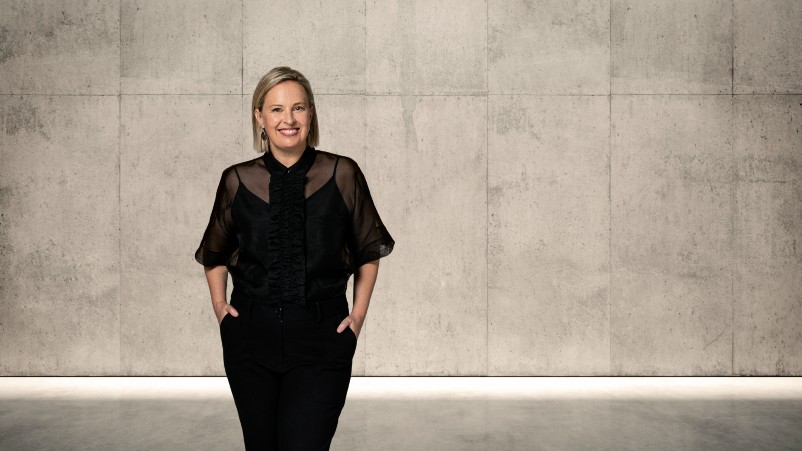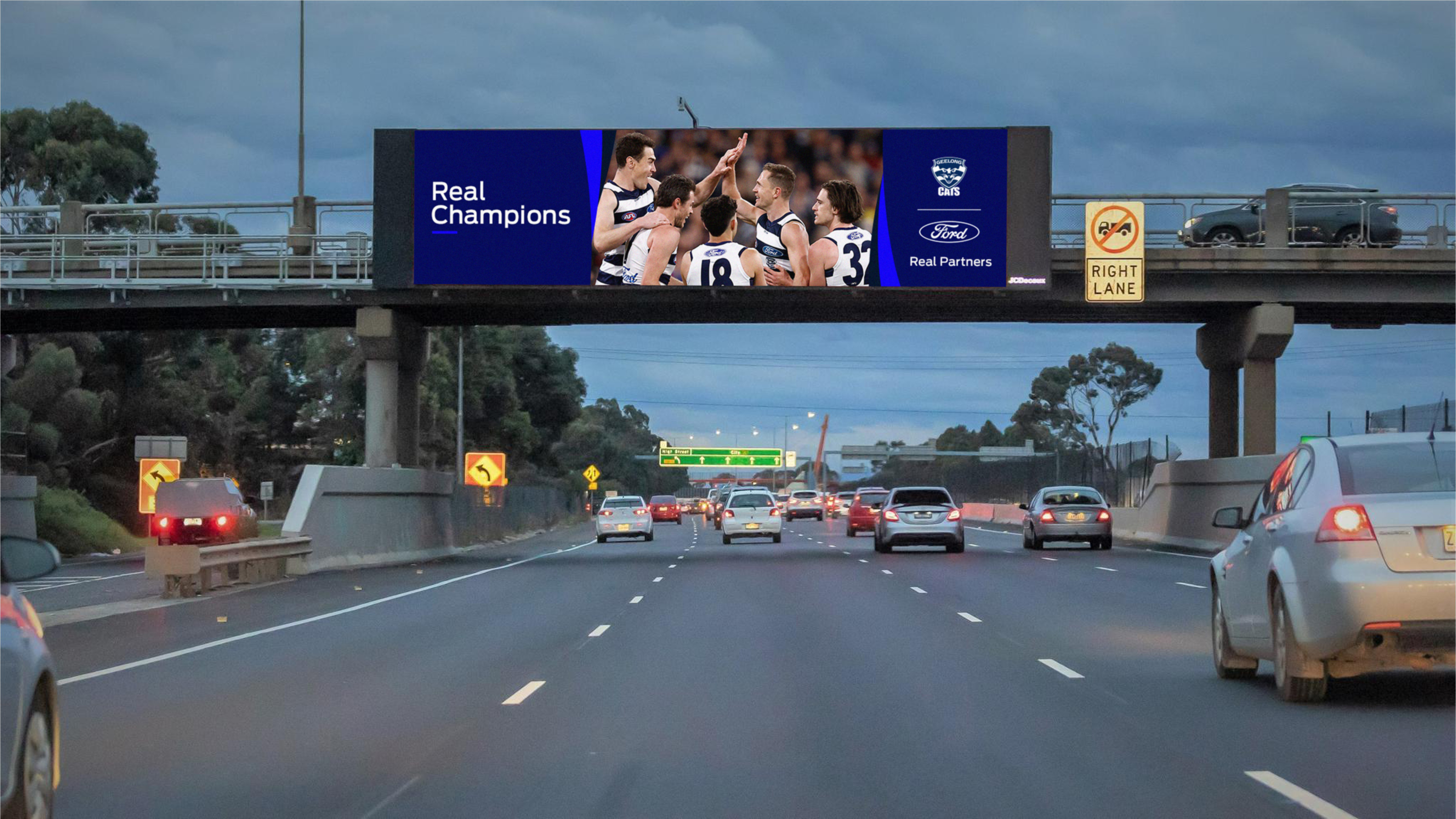I’m calling it: 2023 is the year of Out-of-Home

Out-of-Home is primed for growth, and there are many reasons why advertisers should take note.
Harvard Business Review research flags a big swing back to traditional advertising, even from online pure-players, says JCDecaux CMO Essie Wake. With TV audiences ageing and in decline, while brands drown in digital clutter paying higher prices for declining performance, she thinks Out-of-Home will be the main beneficiary. Here’s why.
The bigger picture
Out-of-Home is primed for growth, and there are many reasons why advertisers should take note. In today’s world, most ad content consumption is a series of personal moments on private screens. Out-of-Home bridges our public and private worlds.
Harvard Business Review (HBR) recently explored why marketers are returning to traditional advertising. The authors unpacked seven factors driving this trend, including traditional media's ability to break through digital clutter, and the decline in third-party cookies.
They reported that consumer-facing brands are leading the shift, with B2C service companies predicting the largest increase in traditional advertising spend (+10.2 per cent), followed by B2C product companies (+4.9 per cent). Somewhat ironically, companies that earn 100 per cent of their sales through the internet are leading this trend – anticipating an 11.7 per cent increase in traditional advertising spend over the next 12 months. We are at a crossroads of definition for ‘performance’ marketing – even digital brands need to make meaningful connections to grow.
Seven key drivers
So, why is traditional advertising on the rise, and will this likely continue? Below is an overview of the seven drivers, as detailed by Harvard Business Review.
1. Brands are drowning in digital clutter
Consumers report frustration and negative brand association with digital advertising clutter. A HubSpot survey found that 57 per cent of participants disliked the ads played before a video and 43 per cent didn’t even watch them. Marketers are looking for a way to cut through the noise.
2. Consumers’ trust in traditional advertising
A recent Marketing Sherpa consumer survey found that the five most trusted channels were traditional media, while the bottom eight were all digital. Out-of-Home and media in public places, garnered the trust of 69 per cent of consumers, while online pop-ups fared the worst at only 25 per cent. Marketers are turning to traditional advertising to build brand credibility and trust with increasingly jaded buyers.
3. Preparing for the decline of third-party cookies
For years, marketers have relied on third-party cookies to track and target consumers. With Google phasing out the third-party cookie and Apple implementing changes to its iOS operating system, this will be a continued headwind for the industry in 2023. The CMO Survey found that 19.8 per cent of marketers in the US agree they will need to refocus on extending their reach and invest more in traditional advertising (outside of online approaches).
4. Tapping into podcasts, a growing medium
Podcasts are a form of digital media. However, unlike banner, display, and other social advertisements that often appear within consumers’ everyday browsing, podcasts use an on-demand approach. According to Ads Wizz, this is a key reason for its advertising success. Interestingly, it’s also a medium likely consumed while commuting Out-of-Home and simultaneously absorbing outdoor advertising messages. This opens up a new, powerful opportunity for omnichannel targeting.
5. Exploiting the digital lift of traditional media
Digital technology can amplify traditional channels in powerful, surprising ways. Who would have thought that the QR code would be resurrected? That’s exactly what happened in 2020. Increasingly, the public screen and other traditional channels are forming the foundation of campaigns that drive online interaction on private screens. The measurable link between the two provides marketers with the opportunity to develop robust marketing analytics regarding ROI and attribution, eroding the advantage of other digital channels.
6. Fine-tuning brand and environmental context
Marketing is an art, as well as a science of contingencies and context. This means that sometimes traditional advertising is a perfect fit for some brands, markets, and messages. For example, TV offers an emotional storytelling platform, while Out-of-Home continues to offer an ideal stage for powerful, hyper-relevant connections. Immediately after the 2022 AFL Grand Final, Ford celebrated Geelong Cats’ victory with messages across digital Out-of-Home assets, to and from Geelong: Relevant, meaningful, and seen at the right time and place.


7. Revisiting digital effectiveness
The CMO Survey recently revealed that 54.8 per cent of marketers track online marketing performance in real time, with an additional 35.2 per cent doing so quarterly or weekly. At the same time, marketers are also becoming sceptical of online media’s hyped returns, because the platforms control both advertising inventory and its effectiveness metrics. This has raised concerns related to ad fraud and the worry that online advertising may be far less effective than reported.
Carbon, privacy, budget cuts
While Harvard Business Review is on the money, the pendulum of opinion continues to swing. For good measure, I’m offering five more reasons 2023 will be the year of the public screen. They provide some insights from the trenches of the Out-of-Home industry.
8. Marketing dollars will be too tight to waste
Mike Campbell, Head of International Effectiveness at Ebiquity, was recently quoted as saying “TV remains the channel of choice for large-scale advertisers seeking growth. The dilemma facing marketers, is how to maintain the high reach media plans of yester-year and maintain ROI levels”.
In a year of unpredictable economic turmoil, marketing budget resets are inevitable as costs of online and TV advertising go up. However, impression costs of classic Out-of-Home remain comparatively low. It simply makes good economic sense to balance marketing spend and deploy Out-of-Home for its effectiveness, unique scale and dollar-for-dollar efficiencies.
9. TV audiences are declining (and like me, ageing)
When it comes to pure reach, Out-of-Home consistently outperforms. In fact, JCDecaux reaches 95 per cent of Australians every week, and that number is growing (source: MOVE). Conversely, the number of Australians who do not watch linear TV is increasing. Roy Morgan ‘Screen Australia’ research recently stated that 25 per cent of Australians report they watch no linear TV at all – a big jump from the 9.21 per cent of Australians who claimed they did not watch linear TV back in 2011.
In addition to these shifts in overall consumption, generation gaps across television viewership are emerging. The younger Gen Z are very difficult to reach via traditional TV. Young Australians are digital natives but they live an out and about lifestyle, commuting, shopping, and frequenting urban precincts. They engage more with Out-of-Home platforms every day.
10. One-to-many channel equals lower environmental impact
As a one-to-many channel, Out-of-Home is an increasingly responsible media choice in terms of carbon consumption per impression. There has been a lot of discussion about energy use of Digital Out-of-Home (DOOH) screens, and rightly so. All media owners should take responsibility for their environmental footprint and be held to account by brands and agencies.
The German Institute of DOOH recently presented research commissioned by agency MediaPlus, endorsed by Climate Partner. The research is based on the German market, but we believe the findings are broadly transferrable to Australia.
According to that research, print media such as magazines and newspapers create the most environmental impact, requiring lots of manufacturing, transportation and disposal. This is followed by TV, serving content and ads to one person or a single household. Next, online video and display, with its complex global network of servers, embedded carbon and the powering of devices (private screens). Then, radio, and at the bottom of the list, Out-of-Home.
In fact, small format and large format DOOH create only five and six grams of CO2 per 1,000 impressions respectively. JCDecaux screens deliver hundreds of thousands of viewed impressions per week, all powered by 100 per cent renewable energy. We also carbon offset our emissions from the printing and installation of our classic formats.
11. Uptake of programmatic Out-of-Home expected to double
Without doubt, the digitisation of the Out-of-Home industry has paved the way for new flexibility, creativity and technology advancements. In 2022, 10 per cent of JCDecaux’s total advertising clients have activated programmatically. However, adoption of programmatic in this country is still in its infancy.
We see JCDecaux playing a more prominent role in planning and activating with our rich audience data across the omnichannel space. The technology ‘pipes’ and data foundations already exist, and we are layering that with sophisticated performance metrics, tracking and cross-channel targeting. We see a really strong omnichannel future ahead in the next three to five years. Out-of-Home will no longer be planned and bought in a silo.
12. Smarter data strategies and closing the attribution loop
For many years now, the public screen has always been an impactful addition to the marketing mix, with sophisticated targeting capabilities. However, its true ROI was often unquantifiable. New developments in data science, technology and data collection has changed all that. We can now prove Out-of-Home drives campaign results all the way down the funnel, from awareness, through to conversion.
With newfound methods of (privacy compliant) data capture, marketeers are beginning to see the full picture across the media ecosystem and understand just how Out-of-Home can influence customer behaviours. Store and website visitations, or even FMCG transactions, are just some of the ways in which we are changing the conversation.
I believe the points above amplify the significance of public screens in 2023 and beyond. From where I’m standing, there are many good reasons to be optimistic and excited about Out-of-Home. I hope this has given you a few things to think about when considering your media mix. I’ll see your brand on a public screen very soon.
